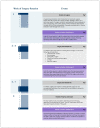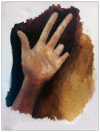Humanistic education in surgery: a "patient as teacher" program for surgical clerkship
- PMID: 32400846
- PMCID: PMC7829014
- DOI: 10.1503/cjs.005319
Humanistic education in surgery: a "patient as teacher" program for surgical clerkship
Abstract
Surgeons are frequently perceived by medical students to be uncompassionate, resolute and individualistic. Surgical education often prioritizes teaching and learning approaches that perpetuate these perceptions. In other specialties, engaging patients in education has shown promise in refocusing attention from the technical and procedural aspects of care toward the humanistic and social aspects. Despite proven favourable outcomes for both patients and students in many clinical areas, a "patient as teacher" approach to surgical education has yet to be adopted widely in Canada. A patient as teacher program was developed for surgical clerks at the University of Toronto with the goal of emphasizing the humanity of the patient, the psychosocial impact of a surgical diagnosis of breast cancer on patients and their families, and the social and humanistic roles for surgeons in providing patient-centred care. We report on the program's development process and pilot session.
© 2020 Joule Inc. or its licensors.
Conflict of interest statement
None declared.
Figures


References
-
- Cochran A, Paukert J, Neumayer L. Does a general surgery clerkship influence student perceptions of surgeons and surgical careers? Surgery. 2003;134:153–7. - PubMed
-
- Vogel BA, Leonhart R, Helmes A. Communication matters: the impact of communication and participation in decision making on breast cancer patients’ depression and quality of life. Patient Educ Couns. 2009;77:391–7. - PubMed
-
- Kumagai AK. A conceptual framework for the use of illness narratives in medical education. Acad Med. 2008;83:653–8. - PubMed
-
- Kinsella EA, Bidinosti S. “I now have a visual image in my mind and it is something I will never forget”: an analysis of an arts-informed approach to health professions ethics education. Adv Health Sci Educ Theory Pract. 2016;21:303–22. - PubMed
Publication types
MeSH terms
LinkOut - more resources
Full Text Sources
